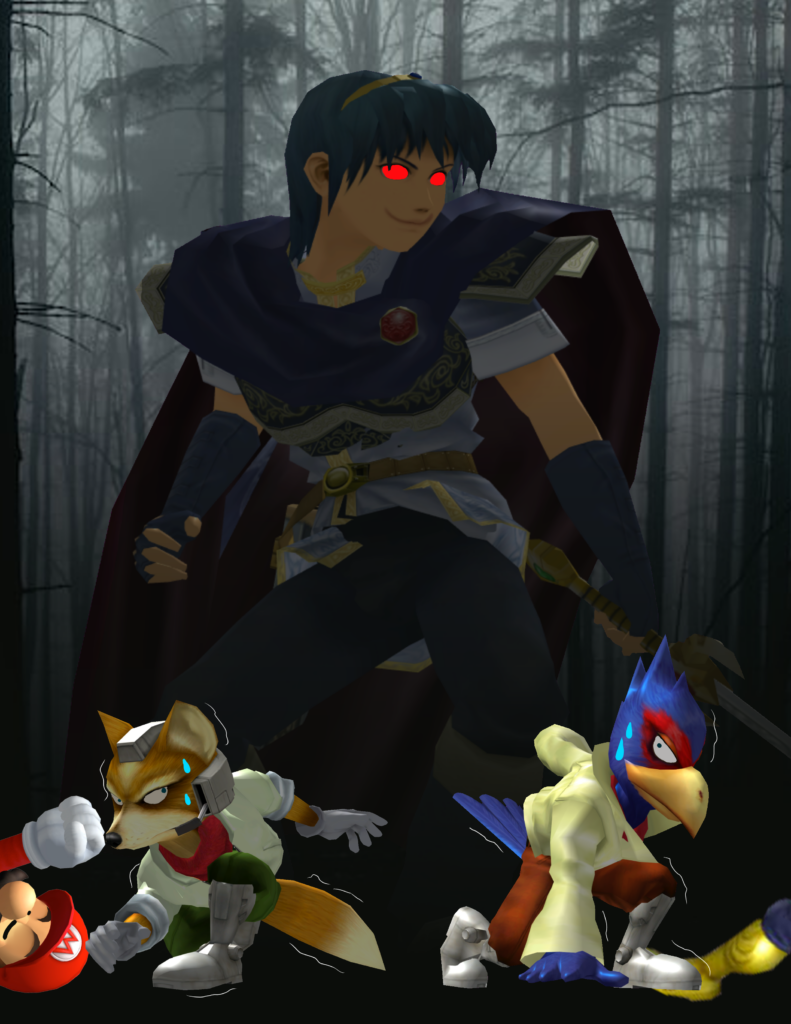Struggle and Success
Over this semester, there are quite a few words I could use to describe my growth as a student, but the most fitting of them all would definitely be ‘struggling.’ Now, this isn’t to say the class was unfair or unfun. I enjoyed it quite a lot. But I started off as a freshman to college, and was rusty with school work after a lazy senior year with a pandemic beforehand. However, despite starting off admittedly very shakily, I would honestly say I’ve definitely improved from the start of the course. Overall, I’m a bit of an unorthodox student when it comes to essay subjects, but please bear with me as we go through my literary journey. I’ll be focusing primarily on my essays and classwork from Phases 1, 2, and 3 and breaking down how I achieved several of the Course Learning Objectives (CLOs).
Of course, we’re starting off with Phase 1, which was an interesting phase for me at the time. To be honest, I was a bit unprepared for college at the time, but I started getting used to everything pretty fast. We were introduced to our CLOs, and specifically the first one was “[Students will] examine how attitudes towards linguistics standards empower and oppress language users.” In a discussion post I did on BlackBoard, I went into detail on how I related to author Amy Tan’s “Mother Tongue” essay. The specific topic was “What parts of Tan’s essay resonate with you most? Why?” While I didn’t have a family where we spoke multiple languages, I did have a family that wasn’t born in the United States and had a very distinct accent. After seeing how my teacher acted towards my dad once his true accent came on, it really did make me realize that even people who speak English can face prejudice and be oppressed, just because of an accent. I wrote about how my dad had “started cursing me out in Jamaican patwa” after a teacher started bad-mouthing me at a parent-teacher conference, and how it let me learn that even people who were citizens and spoke English could still be looked down upon or wrongly judged just because they “don’t talk good.” I set out to clear the first goal of our learning objectives here by using stuff from my own life, through my own writing and analysis. After all, the best writing can come from your own experiences.
Moving onto my Phase 1 essay, I decided to use what I learned from my Tan response post. As we had to write about our most important literary experiences, it was crucial to use something again that was very close to me. Actually, the first draft of my essay was far, far different from my original one. Everything down to the main subject was completely different. Of course, radically changing my essay like this made things harder, but I decided it was for the best. My first essay was about a series called JoJo’s Bizarre Adventure, specifically Part 7: “Steel Ball Run.” I was writing about how the series influenced me to make my own stories. As I said, “I was 15 when I first read “Steel Ball Run.” and didn’t care much about writing at the time. However, the incredible characters and moments have heavily motivated me to become a writer.” It wasn’t all bad, but my main issue with the essay was how much time I spent explaining everything. I had to explain why the literary experience was so valuable to me, but I overdid it with the explanation of the game and its mechanics. I explained the scene, talking about the setting, characters, and motivations. I was completely off on a tangent. It got to the point where the paper had become a summary, and at this point I realized I had made a grave mistake. It’s either, do I simply restart and cut the fat out? Or perhaps talking about “Steel Ball Run” was too much for one essay…
So, I did choose to restart and write about another experience. I decided to go with something a lot more important to my early life, which still influences me to this day. The third CLO, which is “Develop strategies for reading, drafting, collaborating, revising, and editing,” was something I accidentally managed to accomplish here with my first essay. Through drafting and revising I realized my essay was no good, and after reading things through even editing wouldn’t be able to save it. When I sent it to a friend who offered me criticism that was similar to my own thoughts, I knew I had to do something. So I decided to talk about Dragon Ball Z, which is the first anime I truly got into. Instead of talking about the several moments I loved, I decided to step back and look at the greater picture. I talked about how Dragon Ball helped me learn how to read, but also “not just see what I’m seeing and reading, but actually comprehend it” as quoted in the essay itself.
For my second major essay, I continued the trend of writing about things I can relate to. Learning from my mistakes with Phase 1’s essay, I tried to pull away from over-explaining everything. I wrote about a platform fighting game I love, Super Smash Bros. Melee, responding to a popular top player, Joseph “Mang0” Marquez who was ranked 3rd overall for 2022. He made a video talking about how Fox and Falco are the best characters in the game, lacking any significant flaws or bad match-ups. My Phase 2 essay serves to go into greater detail on why he’s wrong about Fox and Falco, and that they’re both countered by Marth. Of course, this is a bit of an esoteric topic for most normal people, like my professor, so I had to get to work explaining everything first. In my introductory paragraphs, I talk about the game itself and try to ease my way into talking about the mechanics. Once the mechanics of the game are explained I can talk about why Marth beats Fox and Falco and go into detail. I get quite technical with game knowledge, as admittedly I was excited writing about something I’m passionate about. There were a number of times I had to cut down on explaining, or reworking old explanations. Throughout the essay I constantly had to reassess what was needed and what wasn’t. For example, I started talking about how good of a grab game Marth has, and that characters like Fox are weak to Marth’s chain-grabs. But I quickly realized that no one’s actually going to understand that, so I elaborated more, saying “In fighting games, characters often have grab attacks which go through the defensive maneuver known as blocking generally but is called ‘shielding’ for the Smash series. Marth’s grab is notable in that its range is far beyond his actual hand and is fast for a grab of its length.” I explained what grabs and shields are, in the context of the Smash series, and additionally explained how Marth’s grab game was good.
The final conventional phase, Phase 3, was unique in that I had to alter my own approach to its essay prompt. It required far more of us, having a larger page count and requiring the usage of at least four unique sources, one of them being scholarly. However, I would honestly argue this is one of my strongest essays I’ve ever written. It truly is the culmination of everything I’ve learned while I wrote my other papers and responses for this class. There was also quite a bit of a learning process involved with making the essay too. Finding sources for my topic, which was the balance of the Smash Bros. games and why Melee is “the best,” was very difficult. In general, getting a good source for certain topics tends to be pretty hard. In fact, usually a good topic is one that’s broad and applies to a lot of people. So my topic wasn’t the best choice for an easy essay. But I didn’t want to write an easy essay, I wanted to write something I actually cared about. Video games aren’t exactly niche at this point anymore, but fighting games— platform fighting games— are definitely not nearly as popular. Finding a source that counted as “scholarly” was especially difficult. I ended up using “A multiplayer game is balanced if a reasonably large number of options available to the player are viable–especially, but not limited to, during high-level play by expert players.” as my scholarly quote. It’s a quote from David Sirlin in question, a video game designer and professional fighting game player. Considering how he not only plays fighting games extensively but also works on them I figured he’s someone who could be considered “scholarly” enough.
In this essay alone, I feel as though I accomplished several of the CLOs. Due to the difficulty of writing the essay, it made me have to really work hard when it came to my citation. Specifically, CLO #6 “Locate research sources (including academic journal articles, magazine and newspaper articles) in the library’s databases or archives and on the Internet and evaluate them for credibility, accuracy, timeliness, and bias,” as it’s effectively the basis of the entire essay. I set up my stance of Melee being the best balanced Smash game compared to the other ones. I admittedly wasn’t as descriptive of game mechanics as before, which is one area I could’ve done better in. However, where my descriptiveness wasn’t as sharp, I excelled in other aspects I normally tend to falter in. I often would explain how a mechanic would work in Melee, and then explain why the lack of it or changes to it made in Ultimate and the other Smash games truly make the game’s balance change for the worse. For example, I talked about how Melee has “perfect shielding,” allowing all characters to deflect projectiles in a skill-based way— timing your shield input. Ultimate has parrying instead which doesn’t provide much use versus projectiles which significantly harms characters with poor range or options to get closer. I was working to closely follow the seventh CLO, as I had to “compose texts that integrate a stance with appropriate sources, using strategies such as summary, analysis, synthesis, and argumentation.” To make this essay, I had to summarize game mechanics, analyze and synthesize quotes from other game designers, and of course I had to argue my stance. The final CLO “Practice systematic application of citation conventions” was also something I had to adhere to, as I used MLA citations throughout the paper and had a full “Works Cited” page. I’ve never really had to make one before this semester, but it’s actually something I got used to pretty quickly.
I’ve always been a student that had to scrape by. I’m not a full blown bad student, but I’m no good noodle. Sometimes assignments are hard, sometimes I can’t hand things in on time, and sometimes I feel so horrible I can’t even come to class. But in spite of all the struggling I had to do, it helped strengthen my abilities as a writer. I got better at using evidence in more natural ways, and also writing argumentative essays which were something I always tended to struggle with. But even though I struggled, I came out benefitting from it. And I wouldn’t change a single thing. Not one thing.



